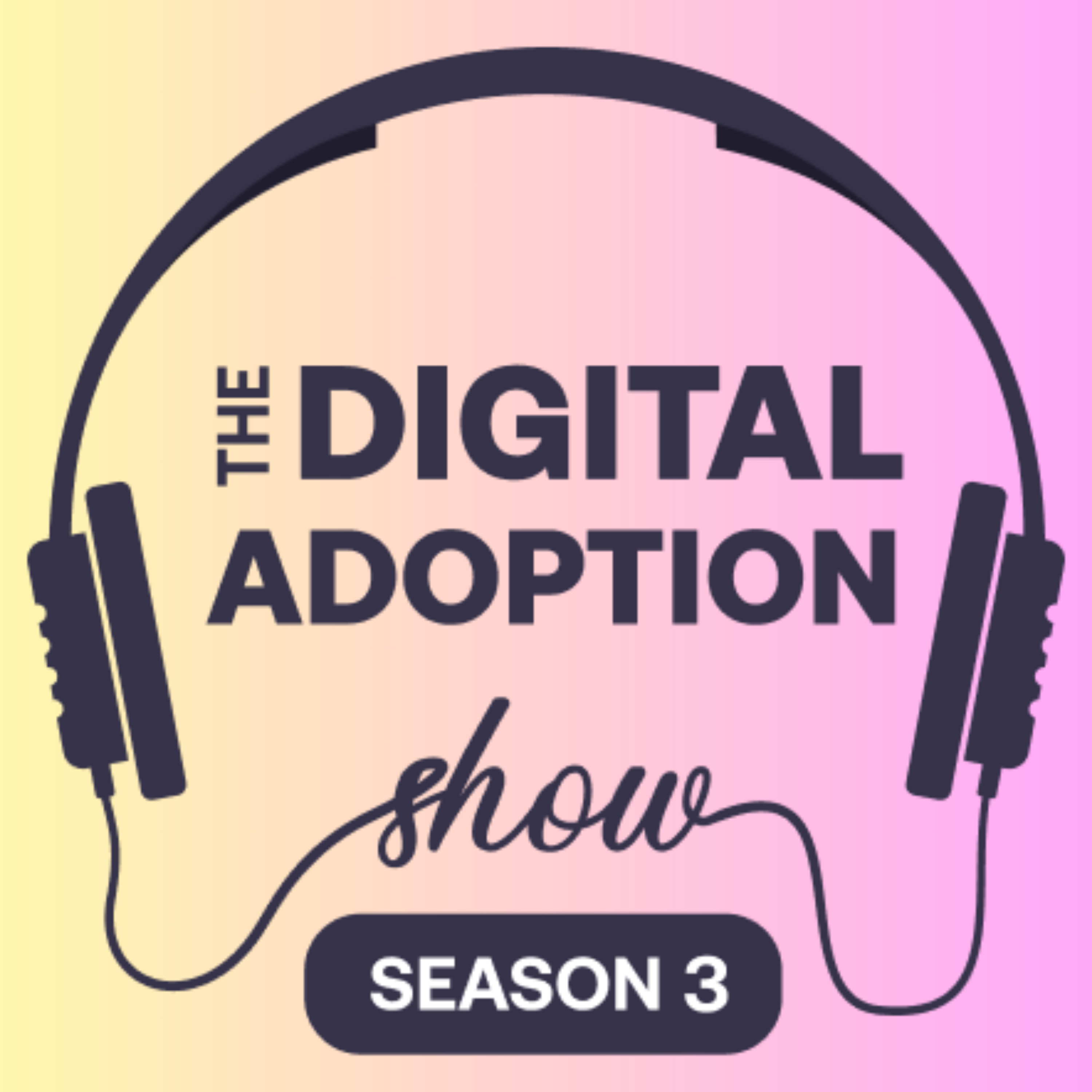In today’s rapidly evolving digital landscape, organizations are constantly seeking ways to improve digital adoption and enhance the learning and development (L&D) experiences for their employees. However, this journey is fraught with challenges and requires a deep understanding of the gaps between customer needs and vendor solutions. In this blog, we’ll delve into these issues with insights from Joe Hill-Wilson, the Chief Commercial Officer, Lead Solutions Architect, and one of the founding members of LearnAmp. With 18 years of experience in helping global organizations scale, Joe has a wealth of knowledge in people operations, organizational development, and bridging the gap between customer expectations and digital solutions.
The Importance of Bridging the Digital Adoption Challenges Gap
Digital adoption is not just about implementing new tools and technologies; it’s about ensuring that these solutions are effectively integrated into the organization and meet the real-world needs of users. Joe emphasizes the critical importance of understanding the differences in how customers and vendors perceive digital adoption. While customers are primarily concerned with ease of use, value delivery, and the overall user experience, vendors often focus on engagement metrics, sales, and user satisfaction scores.
Joe points out that successful digital adoption hinges on aligning these perspectives. Both customers and vendors must have a clear understanding of the roles they play in the process and the goals they are working toward. Open communication and transparency are key to building a strong vendor-customer relationship. As Joe notes, feedback—whether positive or negative—should be viewed as a gift that can help refine and improve the product.
Adopting a Customer-Centric Design Approach
To bridge the gap in digital adoption, organizations must adopt a customer-centric design approach. This means placing customer feedback at the heart of product development and ensuring that digital solutions are designed to meet the actual needs of users. Joe stresses the importance of engaging with customers throughout the product development process, from initial interviews and workshops to alpha and beta testing. This iterative approach allows organizations to refine their solutions based on real-world feedback and ensures that the final product delivers tangible value.
One of the key strategies Joe highlights is the importance of maintaining an agile development process. Rather than sticking to a rigid, waterfall approach, organizations should be willing to iterate and adapt based on ongoing feedback. This flexibility is crucial, especially in the early stages of product development, where minimal viable products (MVPs) can be tested and refined before a full-scale launch.
Handling Negative Feedback
Negative feedback is an inevitable part of the digital adoption process, but it’s how organizations handle this feedback that can make or break their success. Joe advocates for viewing negative feedback as an opportunity to understand the root causes of user dissatisfaction and to explore creative solutions. Rather than dismissing or ignoring negative feedback, organizations should seek to understand what users are trying to achieve and work collaboratively to find flexible solutions that meet these needs.
Joe shares an example from LearnAmp, where the team has developed tools that can be personalized and adapted to different use cases. This flexibility allows the platform to meet the unique needs of each customer, rather than forcing a one-size-fits-all solution. By focusing on the underlying problems that users are trying to solve, organizations can create products that are more aligned with their customers’ needs and expectations.
Common Misconceptions in L&D and LMS Development
In the world of L&D, there are several common misconceptions that can hinder the development of effective learning management systems (LMS). Joe notes that many vendors in the L&D space have not worked directly in L&D roles, leading to a disconnect between the solutions they create and the actual needs of L&D professionals. This disconnect can result in the development of technology that is out of touch with the real challenges faced by L&D teams.
One of the most significant misconceptions is the belief that more content equals better learning. Joe argues that content overload can actually be counterproductive, leading to confusion and disengagement among learners. Instead, the focus should be on curating content that is directly relevant to the unique development needs of each learner. By providing the right content at the right time, organizations can create a more personalized and impactful learning experience.
Another common misconception is the overemphasis on gamification as a solution for engagement. While gamification can be a useful tool for motivating learners, Joe cautions against relying too heavily on it. Intrinsic motivation—such as the desire to develop skills, improve performance, and achieve personal goals—is far more powerful and sustainable than the extrinsic rewards offered by gamification.
Understanding and Matching Organizational Maturity
One of the critical factors in successful digital adoption is understanding the level of digital maturity within an organization and matching the solutions to that maturity level. Joe explains that pushing a customer too far too quickly can lead to resistance and failure. Instead, organizations should focus on gradually introducing new features and capabilities that align with the current level of digital literacy and maturity within the organization.
Joe shares how LearnAmp approaches this process by starting with a thorough understanding of the customer’s current systems and processes. The goal is to match and improve upon these existing solutions while gradually introducing new features that enhance the user experience. This approach ensures that users are not overwhelmed and that they can adapt to new tools and technologies at a comfortable pace.
Strategies for Improving User Engagement and Learning Retention
User engagement and learning retention are critical challenges in today’s L&D environment. Joe offers several strategies that LMS vendors can use to improve these outcomes:
- Tie Learning to Career Goals: One of the most effective ways to motivate learners is to show them how their learning activities directly contribute to their career development. By linking learning to skill development, performance improvement, and career progression, organizations can create a more meaningful and motivating learning experience.
- Decentralize L&D Ownership: Joe emphasizes the importance of involving managers and coaches in the L&D process. By giving them the tools and responsibility to track and support their teams’ learning journeys, organizations can create a more integrated and effective L&D strategy. Decentralizing ownership also allows for more tailored and relevant learning experiences that align with the specific needs of different teams.
- Focus on Practical Application: Learning retention is not just about consuming content; it’s about applying that knowledge in real-world situations. Joe recommends incorporating assessments and practical activities into the learning process, allowing learners to demonstrate their understanding and receive feedback. This approach reinforces learning and ensures that it has a tangible impact on performance.
- Iterative Learning: Learning should be an ongoing process, with opportunities for learners to revisit and refine their knowledge and skills over time. Joe suggests incorporating self-reporting tools, video assessments, and coaching sessions into the learning journey, enabling learners to continuously improve and apply their learning in practical ways.
Overcoming Common Pitfalls in Digital Adoption
Despite the best intentions, many organizations struggle with the real-world implementation of digital solutions. Joe identifies several common pitfalls and offers advice on how to avoid them:
- Lack of Preparation: Successful digital adoption requires thorough preparation. Joe stresses the importance of conducting content audits, developing clear communication strategies, and creating engagement plans before launching a new solution. This preparation ensures that the implementation process is smooth and that users are ready and excited for the new tools.
- The Trough of Disillusionment: After the initial excitement of a new launch, organizations often experience a drop in engagement, known as the trough of disillusionment. To avoid this, Joe recommends having a clear plan for sustaining engagement after the launch. This could include rolling out new features gradually, running ongoing campaigns, and maintaining regular communication with users to keep them engaged and motivated.
- Tailoring Solutions to User Needs: One-size-fits-all solutions rarely work in the real world. Joe advises organizations to focus on understanding the unique needs of their users and tailoring solutions to meet those needs. This might involve toggling features on and off, personalizing content, and providing ongoing support to ensure that users get the most value from the platform.
Creating and Communicating Context for Learners
Providing context that motivates learners to engage with digital platforms is crucial for the success of any L&D strategy. Joe highlights the importance of understanding what drives different stakeholder groups—learners, managers, and administrators—and communicating the benefits of digital solutions in a way that resonates with each group.
Managers and coaches play a critical role in this process, acting as intermediaries who can translate the value of digital solutions into terms that are meaningful for their teams. By aligning L&D offerings with individual development needs and career goals, managers can help learners see the practical benefits of engaging with digital platforms.
Joe also emphasizes the importance of treating L&D like a product, with a strong focus on marketing and communication. Tools like push notifications, personalized recommendations, and featured content can help keep learners informed and engaged, ensuring that they are aware of the resources available to them and how these resources can benefit their development.
Conclusion: The Path Forward for Digital Adoption and L&D
As organizations continue to navigate the challenges of digital adoption and L&D, it’s clear that a customer-centric approach is key to success. By listening to feedback, tailoring solutions to user needs, and maintaining an agile, iterative approach to product development, organizations can bridge the gap between customer expectations and digital solutions.
Joe Hill-Wilson’s insights offer a valuable roadmap for organizations looking to improve their digital adoption strategies and create more engaging, impactful L&D experiences. By focusing on the real-world needs of users, staying flexible in the face of change, and continuously iterating on feedback, organizations can ensure that their digital solutions are not only adopted but embraced by their employees.
In the end, successful digital adoption is about more than just technology—it’s about understanding people, creating value, and fostering a culture of continuous learning and improvement. With the right strategies and a commitment to customer-centric design, organizations can bridge the gap and achieve lasting success in the digital age.




